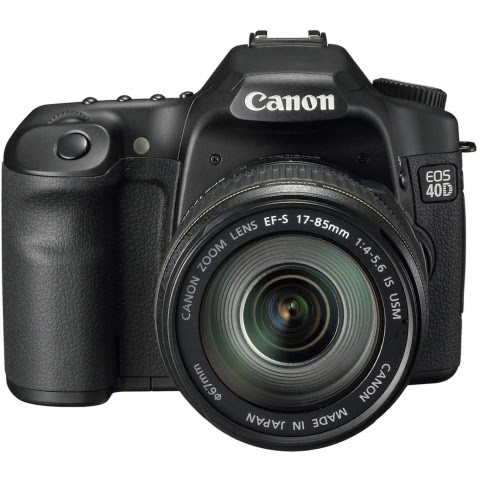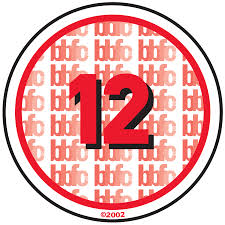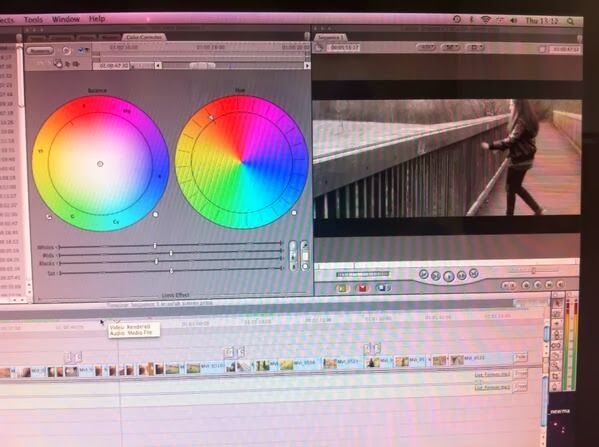Simren AS Media
Friday, 2 May 2014
Evaluation.
What have you learnt about technologies from the process of constructing this product?
 From constructing this product, in particular I have learned how to use the camera and its equipment, using Final Cut Pro editing software and using social media. Without the technology available to me for making the film opening, I would not have been able to achieve any good quality shots or editing. First of all in terms of blogging, I learnt that constantly updating my work and keeping a record of my work on the blog was very useful as it helped me remember what I needed to do further. It was also useful because it is easily accessible, even on my iPhone which allowed me to look at my blog wherever and whenever if I needed to in the process of research and planning and then the actual film production. Using blogger has allowed me to present my work in various different ways such as posting video/website links and using pictures that link to my work. Presenting my work in a visual way makes my blog more understandable and easier to find important aspects of it such as the risk assessment and storyboard. During the filming day, I needed to quickly look over the risk assessment and I was able to access it straight away on my phone, this was better than having it in a hard paper copy as we already had lots of camera equipment to look after.
From constructing this product, in particular I have learned how to use the camera and its equipment, using Final Cut Pro editing software and using social media. Without the technology available to me for making the film opening, I would not have been able to achieve any good quality shots or editing. First of all in terms of blogging, I learnt that constantly updating my work and keeping a record of my work on the blog was very useful as it helped me remember what I needed to do further. It was also useful because it is easily accessible, even on my iPhone which allowed me to look at my blog wherever and whenever if I needed to in the process of research and planning and then the actual film production. Using blogger has allowed me to present my work in various different ways such as posting video/website links and using pictures that link to my work. Presenting my work in a visual way makes my blog more understandable and easier to find important aspects of it such as the risk assessment and storyboard. During the filming day, I needed to quickly look over the risk assessment and I was able to access it straight away on my phone, this was better than having it in a hard paper copy as we already had lots of camera equipment to look after.

As well as using blogger, I used YouTube in the pre-production process which was extremely useful because I was able to see how other media students had filmed their media task. Also, YouTube allowed me to look at a variety of real film openings which I was therefore able to analyse and apply to my selected genre(psychological thriller). From using YouTube, I learnt how to upload videos as well.
In terms of the camera, I learnt how to use it in various ways especially using the different range of lenses to create our shots. The camera and its lenses were full of quality which an old, usual handheld camcorder would greatly lack. For all the shots we did not just stick to one lens, we used the 35mm, 50mm and 75mm. For example for filming the main characters eyes, we wanted the camera shot to be a close up so we ensured that we used the 75mm lens to achieve this effectively. For the shot of the main characters sister on the bridge we used the 35mm lens to create a long shot. To make sure that we had steady camera shots, we put the camera on a tripod and steady cam which worked very well. I also learnt that using the boom microphone is important in achieving good sound quality but for the film making we did not need to record any diegetic sounds. I also learnt how to import footage from the camera memory card on to the apple macs and then import selected footage in to Final Cut Pro.
I have also learnt to use the editing software 'Final Cut Pro' on the apple macs. From editing I learnt that editing is not a straightforward process, it is complex but gradually I was able to use it to a good standard for editing the final cut. I learnt how to balance sound levels and cut and add in audio levels where appropriate, I learnt how to colour grade the footage to a desired level (increasing the darkness in my case) and adding in titles.
How did you attract/address your audience?
Who would be the audience for your media product?/How does your media product represent particular social groups?
 In research and planning we researched the different age classifications and what they involved and we decided that 12+ age classification was best suited for our film. Our film does not contain any extreme or violent scenes but it does contain some scenes that would be psychologically upsetting to any viewer so that's why our selected choice of audience is 12+ because they will be able to have a better understanding of the concepts. Due to our film being made independently, our target
audience would be a niche British audience. This is because the film is gritty, low budget and set in British locations. We looked in to the stereotypes of a typical teenage girl and we met these stereotypes through costume and emotions. The mise en scene is quite dull which reflects on the emotions teenagers can feel. To add suspense and to draw audiences in further we used mysterious and enigmatic music to build up tension and curiosity for audiences. Our film has not been marketed, but if it were it
would be online below the line advertising through various platforms such as
Facebook and YouTube and would draw in only those interested in it to watch it.
As a group we decided to give our film a 12A certificate so it could reach
quite a large age range of audience, however only people interested in small niche British
films would be most likely watch it. In particular I think the most common type of audience our film opening would attract would be teenage girls because the main character in the film is a girl meaning that she would be relatable to girls similar of that age.
In research and planning we researched the different age classifications and what they involved and we decided that 12+ age classification was best suited for our film. Our film does not contain any extreme or violent scenes but it does contain some scenes that would be psychologically upsetting to any viewer so that's why our selected choice of audience is 12+ because they will be able to have a better understanding of the concepts. Due to our film being made independently, our target
audience would be a niche British audience. This is because the film is gritty, low budget and set in British locations. We looked in to the stereotypes of a typical teenage girl and we met these stereotypes through costume and emotions. The mise en scene is quite dull which reflects on the emotions teenagers can feel. To add suspense and to draw audiences in further we used mysterious and enigmatic music to build up tension and curiosity for audiences. Our film has not been marketed, but if it were it
would be online below the line advertising through various platforms such as
Facebook and YouTube and would draw in only those interested in it to watch it.
As a group we decided to give our film a 12A certificate so it could reach
quite a large age range of audience, however only people interested in small niche British
films would be most likely watch it. In particular I think the most common type of audience our film opening would attract would be teenage girls because the main character in the film is a girl meaning that she would be relatable to girls similar of that age.
Here are some examples from our film opening of conventions we used:
Looking back at your preliminary task, what do you feel you have learnt in the progression from it to the full product?
For filming in the main task, I was able to use a range of
different shots by using quality professional camera equipment and apparatus
such as the tripod to create steady shots to ensure the film opening would look
polished and well made. The preliminary task enabled me to practice using the
camera efficiently so for the main task I knew how to use it properly. The
preliminary task was also useful to me because it enabled me to gain and have a
better understanding of the editing software Final Cut Pro for use in the main
task. For example, I learned how to edit sound levels, use the colour corrector
to even out cuts and creating and adding titles where appropriate.
AUDIENCE FEEDBACK:
Priya Grace said: The film opening definitely has enigma and mystery within it and I think that Simren and her group have met the conventions of a psychological thriller very well. The music matches the tone of the film and as it builds up, so does the action. Not showing the girls face made me intrigued to continue watching and it was a very clever technique that Simren and her group applied to their film opening.
 From constructing this product, in particular I have learned how to use the camera and its equipment, using Final Cut Pro editing software and using social media. Without the technology available to me for making the film opening, I would not have been able to achieve any good quality shots or editing. First of all in terms of blogging, I learnt that constantly updating my work and keeping a record of my work on the blog was very useful as it helped me remember what I needed to do further. It was also useful because it is easily accessible, even on my iPhone which allowed me to look at my blog wherever and whenever if I needed to in the process of research and planning and then the actual film production. Using blogger has allowed me to present my work in various different ways such as posting video/website links and using pictures that link to my work. Presenting my work in a visual way makes my blog more understandable and easier to find important aspects of it such as the risk assessment and storyboard. During the filming day, I needed to quickly look over the risk assessment and I was able to access it straight away on my phone, this was better than having it in a hard paper copy as we already had lots of camera equipment to look after.
From constructing this product, in particular I have learned how to use the camera and its equipment, using Final Cut Pro editing software and using social media. Without the technology available to me for making the film opening, I would not have been able to achieve any good quality shots or editing. First of all in terms of blogging, I learnt that constantly updating my work and keeping a record of my work on the blog was very useful as it helped me remember what I needed to do further. It was also useful because it is easily accessible, even on my iPhone which allowed me to look at my blog wherever and whenever if I needed to in the process of research and planning and then the actual film production. Using blogger has allowed me to present my work in various different ways such as posting video/website links and using pictures that link to my work. Presenting my work in a visual way makes my blog more understandable and easier to find important aspects of it such as the risk assessment and storyboard. During the filming day, I needed to quickly look over the risk assessment and I was able to access it straight away on my phone, this was better than having it in a hard paper copy as we already had lots of camera equipment to look after. As well as using blogger, I used YouTube in the pre-production process which was extremely useful because I was able to see how other media students had filmed their media task. Also, YouTube allowed me to look at a variety of real film openings which I was therefore able to analyse and apply to my selected genre(psychological thriller). From using YouTube, I learnt how to upload videos as well.
 |
| Tripod |
 |
| Steadicam |
I have also learnt to use the editing software 'Final Cut Pro' on the apple macs. From editing I learnt that editing is not a straightforward process, it is complex but gradually I was able to use it to a good standard for editing the final cut. I learnt how to balance sound levels and cut and add in audio levels where appropriate, I learnt how to colour grade the footage to a desired level (increasing the darkness in my case) and adding in titles.
How did you attract/address your audience?
Who would be the audience for your media product?/How does your media product represent particular social groups?
 In research and planning we researched the different age classifications and what they involved and we decided that 12+ age classification was best suited for our film. Our film does not contain any extreme or violent scenes but it does contain some scenes that would be psychologically upsetting to any viewer so that's why our selected choice of audience is 12+ because they will be able to have a better understanding of the concepts. Due to our film being made independently, our target
audience would be a niche British audience. This is because the film is gritty, low budget and set in British locations. We looked in to the stereotypes of a typical teenage girl and we met these stereotypes through costume and emotions. The mise en scene is quite dull which reflects on the emotions teenagers can feel. To add suspense and to draw audiences in further we used mysterious and enigmatic music to build up tension and curiosity for audiences. Our film has not been marketed, but if it were it
would be online below the line advertising through various platforms such as
Facebook and YouTube and would draw in only those interested in it to watch it.
As a group we decided to give our film a 12A certificate so it could reach
quite a large age range of audience, however only people interested in small niche British
films would be most likely watch it. In particular I think the most common type of audience our film opening would attract would be teenage girls because the main character in the film is a girl meaning that she would be relatable to girls similar of that age.
In research and planning we researched the different age classifications and what they involved and we decided that 12+ age classification was best suited for our film. Our film does not contain any extreme or violent scenes but it does contain some scenes that would be psychologically upsetting to any viewer so that's why our selected choice of audience is 12+ because they will be able to have a better understanding of the concepts. Due to our film being made independently, our target
audience would be a niche British audience. This is because the film is gritty, low budget and set in British locations. We looked in to the stereotypes of a typical teenage girl and we met these stereotypes through costume and emotions. The mise en scene is quite dull which reflects on the emotions teenagers can feel. To add suspense and to draw audiences in further we used mysterious and enigmatic music to build up tension and curiosity for audiences. Our film has not been marketed, but if it were it
would be online below the line advertising through various platforms such as
Facebook and YouTube and would draw in only those interested in it to watch it.
As a group we decided to give our film a 12A certificate so it could reach
quite a large age range of audience, however only people interested in small niche British
films would be most likely watch it. In particular I think the most common type of audience our film opening would attract would be teenage girls because the main character in the film is a girl meaning that she would be relatable to girls similar of that age.
What kind of media institution might distribute your product and why?
In what ways does your media product use, develop or challenge forms and conventions of real media products?
Here are some examples from our film opening of conventions we used:
 |
| Extreme close up- only showing eyes not to reveal characters face. |
 |
| Fast and snappy flashback scenes- add to the enigma and mystery. |
Looking back at your preliminary task, what do you feel you have learnt in the progression from it to the full product?
From the preliminary task, I have learnt a wide variety of
skills ranging from using the camera equipment to a high standard to using the
editing software ‘Final Cut Pro’ on the Apple Macs. The most important thing I
have learned is to be efficient in research and planning in order to ensure
that everything is prepared and organised before filming begins. Being prepared
before filming is extremely important because when the filming day comes, you
need an accurate plan of what you want to film and how you want it to be filmed
otherwise problems may arise which can result in time being lost. My group and I learned that having a
finished storyboard is vital before beginning any filming because otherwise you
do not have a clear structured plan to follow out which can make the filming
and editing a lot more difficult. I found that good time management is
necessary for all aspects of research, planning and filming because for both
the preliminary and main task we had a fixed time to complete the full task and
meet deadlines.
 |
| Colour correcting |
During planning for the preliminary task, my group’s
storyline was too over complicated and from feedback from peers and teachers we
were advised to make our storyline more simplistic. This was because only the
quality of the shots and camera angles were important. I applied this to my
main task, creating a storyline that has mystery, enigma, quality camera
shots/editing and simplicity but effectiveness which I think my group and I achieved
well. Without having done the preliminary task, I do not think that I would
have been prepared for the main task so the preliminary task was good practice
and was useful in developing skills such as team work in that everyone has to
contribute to the piece equally.
 |
| Altering sound levels |
AUDIENCE FEEDBACK:
Priya Grace said: The film opening definitely has enigma and mystery within it and I think that Simren and her group have met the conventions of a psychological thriller very well. The music matches the tone of the film and as it builds up, so does the action. Not showing the girls face made me intrigued to continue watching and it was a very clever technique that Simren and her group applied to their film opening.
Thursday, 13 February 2014
Research and Planning- Editing.
 |
| Letterbox from our film |
 |
| Fading the music |
 For some of our shots, we wanted to make it clear that it is a flashback so we decided to use a black and white effect on these. To do this you we had to go to colour corrector and adjust the colours to get the effect that we wanted. Also, to make these shots seem a bit dazed, we decided to insert a slow motion effect which added more to the the enigma.
For some of our shots, we wanted to make it clear that it is a flashback so we decided to use a black and white effect on these. To do this you we had to go to colour corrector and adjust the colours to get the effect that we wanted. Also, to make these shots seem a bit dazed, we decided to insert a slow motion effect which added more to the the enigma.
Tuesday, 11 February 2014
Research and Planning: Risk Assessment.
Having a risk assessment is a very important thing to have because it helps you with awareness of potential risks and hazards during the filming process. Its purpose is to decrease the possibility of hazards by exploring control measures to prevent the risk of the hazard occurring. We created a risk assessment because it shows that safety has been taken in to consideration and thought through in terms of precautions to enable the prevention of hazards.
Here is our film opening risk assessment:
Friday, 7 February 2014
Research and Planning: Costume, props, actors, audience, film name and lighting.
Costume
Casual teenage girl style yet slightly scruffy clothes to show main character has been laying down in grass for a while.
Silver charm bracelet.
Actors
Simren (myself) as Crystal- main character.
Asfah as Crystals sister
Target audience
Teens & Adults. It would appeal to teens because the focus of the film is on a teenager and how she has to deal with such a difficult condition (amnesia) at a young age along with various other emotional factors that teenagers face on a regular basis such as relationships and feeling under pressure from various different sources. It would appeal to adults too, because of all the interesting psychology behind the occurrences and the story line.
Lighting/Colour
The opening of the film is shot outdoors with natural daylight, including sun but won't appear too bright on film.
The colours are quite bright (sunshine, and surroundings) reflects how Crystal is seeing her environment around her, a bit dazy.
Film Name
'The Forgotten One'
Casual teenage girl style yet slightly scruffy clothes to show main character has been laying down in grass for a while.
- Grey leggings
- Converse shoes
- Hoodie
- Jacket
Silver charm bracelet.
Actors
Simren (myself) as Crystal- main character.
Asfah as Crystals sister
Target audience
Teens & Adults. It would appeal to teens because the focus of the film is on a teenager and how she has to deal with such a difficult condition (amnesia) at a young age along with various other emotional factors that teenagers face on a regular basis such as relationships and feeling under pressure from various different sources. It would appeal to adults too, because of all the interesting psychology behind the occurrences and the story line.
Lighting/Colour
The opening of the film is shot outdoors with natural daylight, including sun but won't appear too bright on film.
The colours are quite bright (sunshine, and surroundings) reflects how Crystal is seeing her environment around her, a bit dazy.
Film Name
'The Forgotten One'
Thursday, 6 February 2014
Subscribe to:
Comments (Atom)


